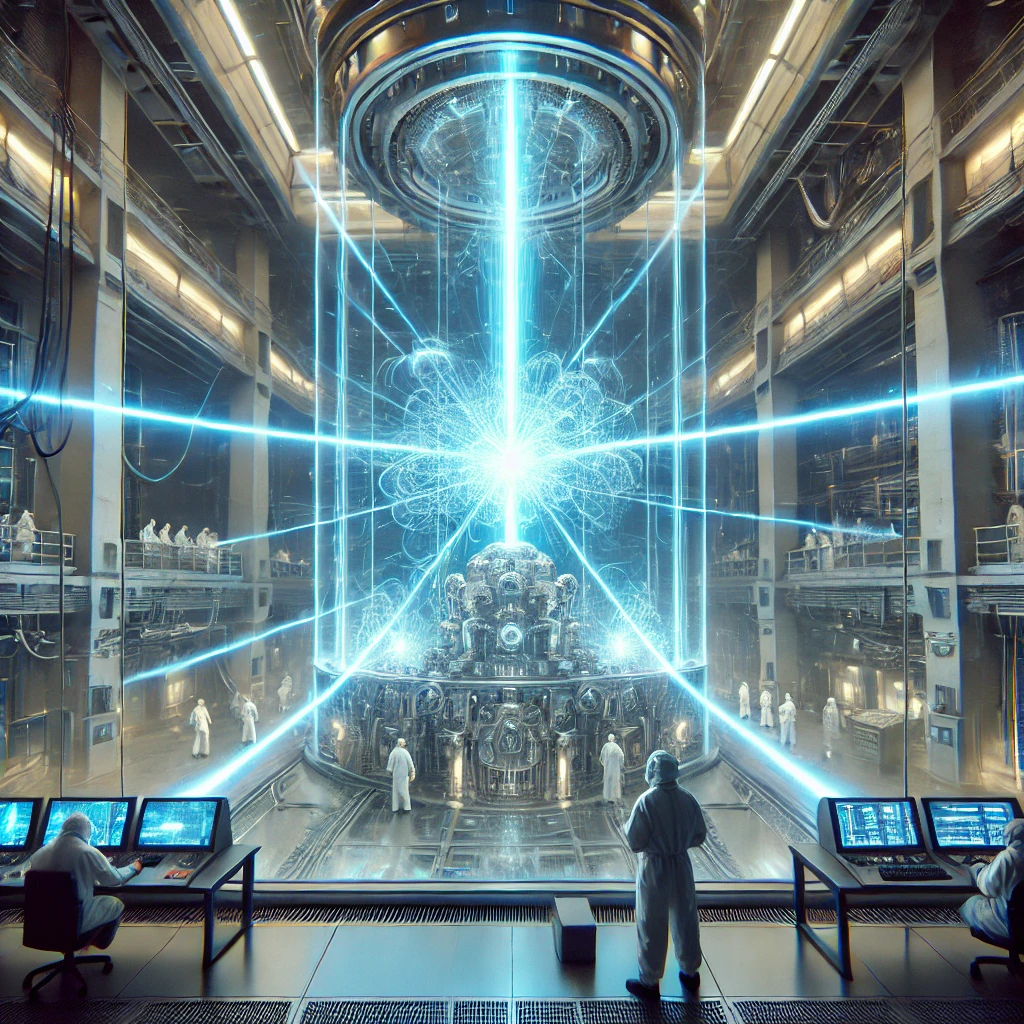What is laser-driven fusion?
Article Source: Laser-Driven Fusion Research

Why You Should Care
Laser-driven fusion has the potential to revolutionize energy production by offering a cleaner, nearly limitless source of power. Fusion, the same process that powers stars, could help reduce our dependence on fossil fuels, cut carbon emissions, and provide a sustainable energy alternative. With energy demands on the rise globally, breakthroughs in fusion research could mean safer, more abundant power without the radioactive waste of traditional nuclear reactors.
Answering the Question… What is Laser-Driven Fusion?
Laser-driven fusion is a technique that uses powerful lasers to compress and heat hydrogen fuel to the point where nuclear fusion occurs, releasing vast amounts of energy. Unlike fission, which splits atoms, fusion merges atomic nuclei, releasing energy in a process that mirrors the sun. Recent advancements have seen scientists reach fusion conditions that closely resemble those needed for a sustainable reaction, creating tremendous excitement around its potential as a renewable energy source.
How Was the Study Done?
To test laser-driven fusion, scientists directed powerful laser beams onto small pellets of hydrogen isotopes, such as deuterium and tritium, creating extreme heat and pressure conditions necessary for fusion. These experiments use intricate laser systems capable of focusing up to 500 trillion watts of power in pulses lasting only billionths of a second, achieving compression rates over 1,000 times the original fuel size. Advanced diagnostic tools were employed to measure reaction yields, temperature, and other critical fusion parameters.
What Was Discovered?
- Incredible Heat: Fusion experiments reached over 100 million degrees Celsius, the temperature required to sustain fusion, matching the sun’s core.
- Laser Power: These tests applied 500 trillion watts of laser energy onto millimeter-sized fuel pellets, approaching the levels needed for self-sustaining fusion.
- Fuel Compression: Precision-aligned lasers compressed hydrogen fuel by factors of over 1,000, essential to trigger fusion reactions.
- Improved Yield: Recent tests achieved 20-30% better fusion yields than previous attempts, indicating improved efficiency.
- Pulse Duration and Shape: Lasers fired in pulses lasting a few billionths of a second (nanoseconds), and optimized pulse shapes concentrated energy more effectively.
While there is still work to be done before achieving a self-sustaining fusion reaction, these findings are critical milestones toward making fusion a viable energy source.
Why Does It Matter?
Laser-driven fusion represents a potential future of clean, sustainable energy, free from the long-lived radioactive waste associated with current nuclear fission reactors. It could eventually lead to virtually endless energy supplies with minimal environmental impact. Progress in fusion research is a promising step in addressing energy challenges worldwide, offering hope for a breakthrough that could meet growing global energy needs while helping combat climate change.
